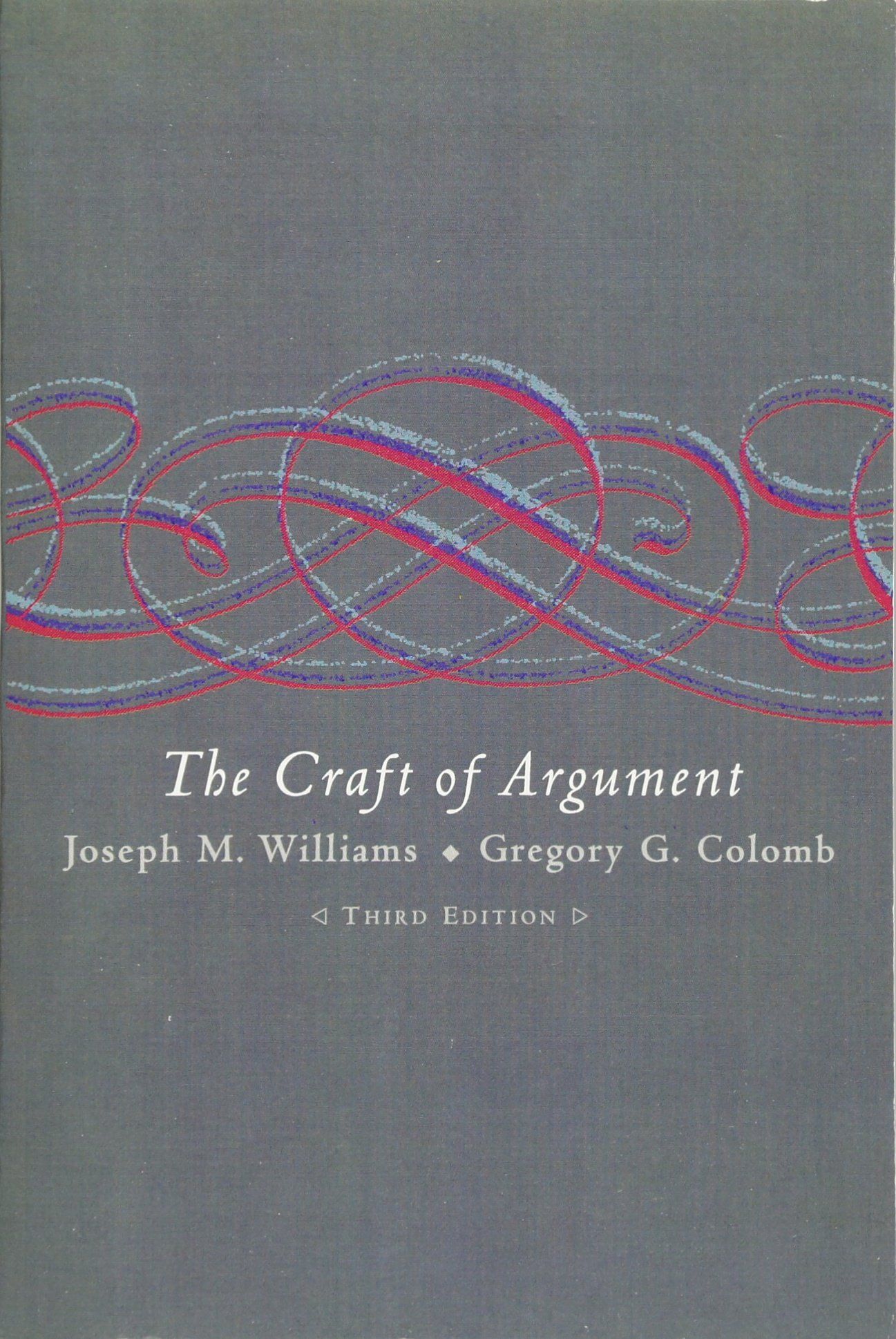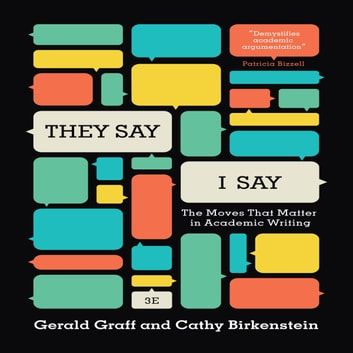Table of contents
Here's an invaluable piece of advice that an English professor once passed on to me: steal style.
It doesn't mean to steal the ideas of others, of course. That's plagiarism.
Stealing style means looking past the ideas to the language structures that express them. Whenever you find a writer you love, examine the words, phrases, and patterns she uses to express her ideas - and make them your own.
Apparently this English professor of mine used to steal the style of his dissertation advisor. As they worked together the advisor would often remark what a good writer he was. The dissertation advisor didn't even realize that he was looking at a carbon copy of his own writing!
That piece of advice - steal style - is the basic premise of the book They Say, I Say: The Moves that Matter in Academic Writing, which offers a very practical introduction to academic writing. It should be required reading for all undergraduate university students.

🧑🎓 Who Should Read This Book?
First-year undergraduate students or anyone in university who never received training in academic writing.
The templates in this book can be particularly helpful for students who are unsure about what to say, or who have trouble finding enough to say, often because they consider their own beliefs so self-evident that they need not be argued for.
🧑🏫 How Will This Book Help?
They Say, I Say provides a crash course in the fundamentals of academic writing, which is seldom taught in high school.
When academic writing is taught, it's usually pretty abstract. We learn mainly about the language conventions - the most frequent words, clause structure, paragraph patterns - but we seldom learn about what these language forms do. In other words, we miss the way in which academic language is used in the course of social interactions among peers.
This book is different.
It focuses primarily on the types of interactions that writers have with other writers, e.g.:
- Introducing 'Standard Views'
- Introducing an Ongoing Debate
- Explaining Quotations
- Disagreeing, with Reasons
- Entertaining Objections
What's more, the book doesn't just introduce these moves in an abstract sense; rather, it gives students practical templates that they can use to make the same interactions in their own writing.
💬 Top 3 Quotes
The authors call our attention away from the language of academic writing - the words, sentence structures, and paragraph patterns - and towards its function, which is fundamentally a conversation with others in your field.
...The best academic writing has one underlying feature: it is deeply engaged in some way with other people's views. Too often, however, academic writing is taught as a process of saying "true" or "smart" things in a vacuum, as if it were possible to argue effectively without being in conversation with someone else.
Aside from getting good grades in university, there's another benefit that comes with developing academic writing skills: it changes you as a person.
Though the immediate goal of this book is to help you become a better writer, at a deeper level it invites you to become a certain type of person: a critical, intellectual thinker who... can participate in the debates and conversations of your world in an active and empowered way.
By outlining the discourse conventions of academic writing, this book teaches us not only to become better writers, but also better readers. As we come to understand ourselves as being in conversation with others when we write, we begin to develop a new understanding of reading.
We suggest, then, that when assigned a reading, you imagine the author not as sitting alone in an empty room... but as sitting in a crowded coffeeshop talking to others who are making claims that he or she is engaging with. In other words, imagine the author as participating in an ongoing, multisided conversation in which everyone is trying to persuade others to agree or at least to take his or her position seriously.
📒 Summary & Notes
Writing Well Means Entering a Conversation
If there is any one point that we hope you will take away from this book, it is the importance not only of expressing your ideas ("I say") but of presenting those ideas as a response to some other person or group ("they say").
"Why are you telling me this?" If you fail to identify the views that you're responding to, your own argument won't have a point. For your writing to be valuable, it needs to solve a problem.

State Your Own Ideas As a Response to Others: A fact means very little on its own. The best way of identifying the value of your writing is by summarizing what others say and then using it to set up your point. Do you agree with what others say? Do you disagree? What's the relationship between your ideas and their ideas?
Who Are "They?": When you identify a "they" - that is, the people to whom your writing responds - you let the reader know which conversation you're entering into. This might be someone with whom the reader agrees or disagrees. "The important thing," notes Graff et al., "is that the 'they'... represent some wider group with which readers might identify."
What Is Academic Writing?
The authors of They Say, I Say were not the first to observe that academic writing involves entering into a conversation with others. This point is easily taken but difficult to practice.
For students who are learning the basic moves of that conversation, this book provides a very practical approach. It shows them how to express their ideas as a response to what others have said. In doing so, it introduces the basic relations one idea can have to another, and the language forms we use to realize those relationships.
The basic move that is central to academic writing, according to the authors, is They Say / I Say:
"[This rhetorical move] represents the deep, underlying structure, the internal DNA as it were, of all effective argument."
How to Write an Academic Essay
Academic writing in particular calls upon writers not simply to express their own ideas, but to do so in response to what others have said.
The central premise of the book They Say, I Say is that academic writing is a conversation. In this style of conversation there are a few basic moves: e.g., agreeing, disagreeing, making concessions, hedging, etc.
The innovation of this book is that it represents these moves in the form of templates that students can implement in their own writing.
Templates?
That's right. Templates.
For example, in the section on Establishing Why Your Claim Matters, the authors offer the following templates:
| X matters / is important because ___. |
| Although X may seem trivial, it is in fact crucial in terms of today's concern over ___. |
| These findings have important consequences for the broader domain of ___. |
These templates give students a practical introduction to the kinds of moves we make in academic writing.
Some teachers might worry that this approach may lead to formulaic writing. However, according to the authors, these templates function more as prompts than scripts; that is, by asking students to insert their ideas into a given structure, templates asks them to expand on them and consider them from different points of view, leading them to "make moves in their writing that they might not otherwise make or even know that they should make."
Reading Academic Essays
Reading for the conversation means looking not just for the thesis of a text in isolation but for the views that motivate the thesis - the "they say."
One great feature of this book is that it teaches students not only how to write academic essays but how to read them as well. If academic writing is, as the authors claim, a conversation, then it's important for students to understand how to enter the conversation from both sides.
This section provides a few strategies students can use to identify and analyze the arguments of others.
What views is the author responding to? Or, in terms borrowed from the book, what do "They say?"
Some writers explicitly identify and summarize a view they are responding to at the outset of their text and then return to it frequently as their text unfolds. Some refer only obliquely to a view that is motivating them, assuming that readers will be able to reconstruct that view on their own.
When the "They Say" Is Unstated: When we start to think about academic writing as a conversation, we can begin to identify the ideas and claims that the writer is engaging with, even if it's not explicitly stated.
Readers need to be armed with various strategies for detecting the conversations in what they read, even when those conversations are not self-evident.
Reading Challenging Texts: Sometimes it's hard to identify what "they say" because of the language used, particularly if you're a non-native speaker. The framework in this book provides a helpful way of identifying the core ideas in a passage, even if much of the language is difficult to understand.
Some writers [use] challenging academic language that requires readers to translate what they are saying into more accessible, everyday terms.

